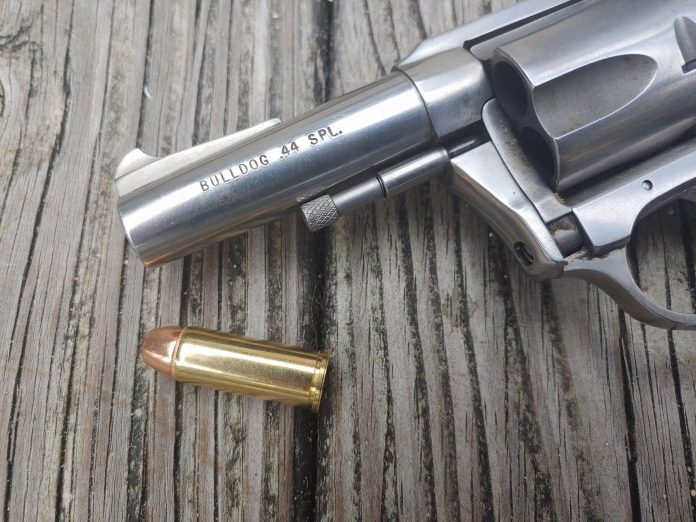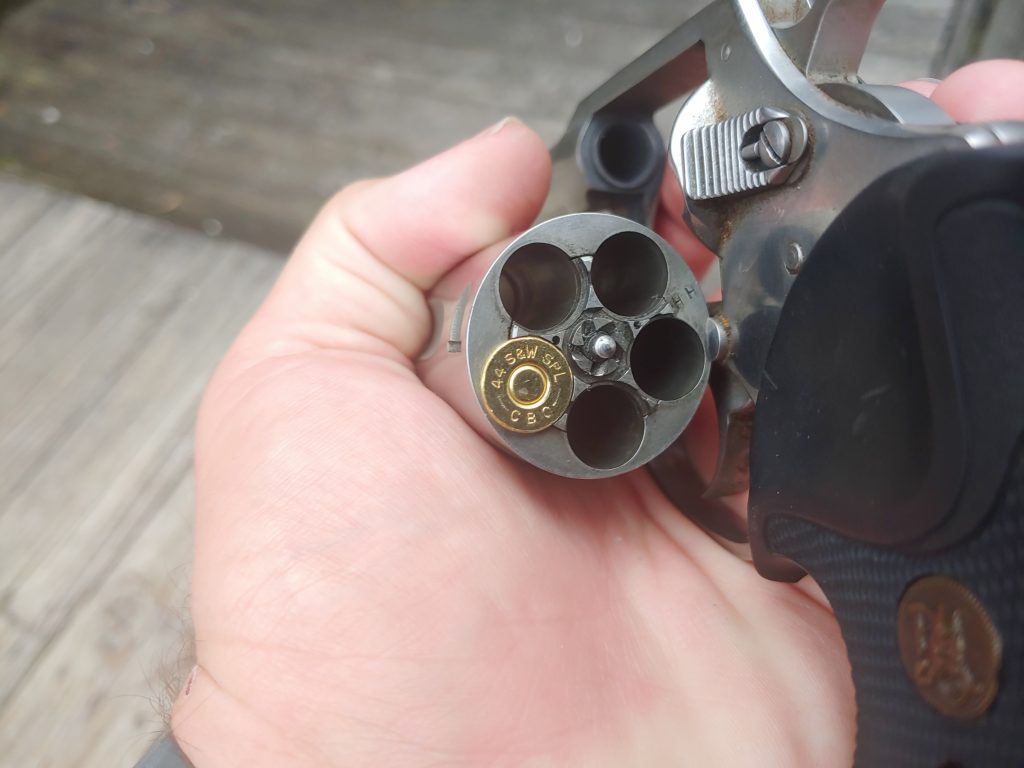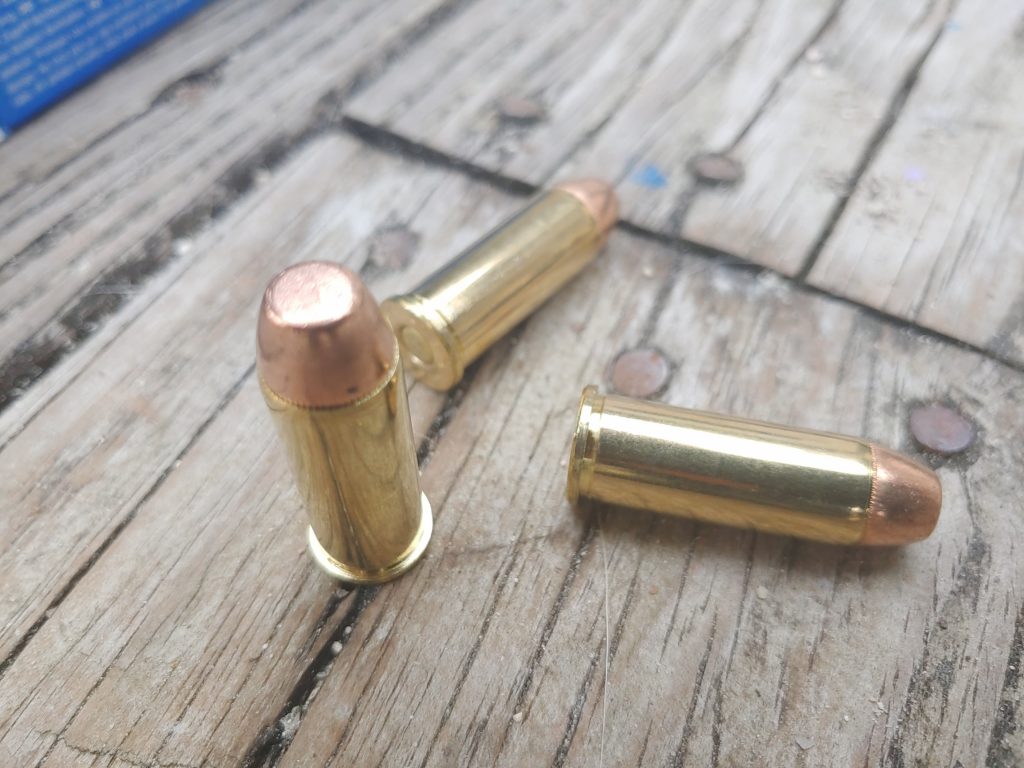
The big bore era of defensive pistols has come and passed, but in its wake, we have countless stories, guns, and calibers. One such caliber, and by extension numerous guns, is the .44 Special. In the day and age of black powder firearms, the big-bore revolver reigned supreme. If it didn’t have four in the name, it must be made for pocket carry. The most famous being .45 Colt, but that’s not to say that there weren’t plenty of other .45s and .44s.
The .44 Special is descended from the rounds of this era. Specifically, it came from the .44 Russian. The .44 Russian is an already interesting design. It was a black powder, center-fire metallic cartridge. It was the first caliber to use an internally lubricated bullet. The Russian nomenclature comes from its development for the Russian military by S&W. The .44 Russian took advantage of new and better metallurgy, and S&W amped it up.
The .44 Russian cartridge launched a 246-grain cartridge at 750 feet per second. That’s not that far from the 45 ACP, even though it was designed in 1870. The projectile was actually a .429 projectile, and they reduced the diameter by adding lubrication grooves to the base.
Aren’t We Talking About the .44 Special?
Yes, but we really have to establish where it came from. Fast forward from 1870 to 1907, and S&W we still in the early 1900s. S&W decided to take advantage of that fancy smokeless powder and designed the Smith and Wesson .44 Hand Ejector 1st Model New Century. They weren’t fans of short, catchy names. This gun became known as the Triple Lock. The name comes from the third locking lug on the cylinder crane.
This new lock allowed the gun to fire the hot and heavy .44 Special cartridge. Alongside this new revolver, S&W had taken the .44 Russian and turned it into the .44 Special. The case was lengthed a bit, and of course, it’s a smokeless powder round. This new cartridge and revolver succeeded and did well for itself.

Elmer Keith declared it the finest revolver ever made. That’s high praise from a man considered to be one of the foremost firearm experts and revolver shooters at the time. S&W’s cartridge was capable of throwing a 246-grain projectile at 750 feet per second. We are getting fairly close to 45 ACP territory and speeds.
That was just the factory loadings. It wasn’t long before hand loads became the legacy of the .44 Special. The factory loadings were good, but the hand loads went hot and heavy. Handloading this round improved its overall performance and helped prove the versatility of the round.
The .44 Associates
A group of shooters, including Elmer Keither and Skeeter Skelton, formed a loose collective known as the .44 Associates. These men would experiment with hand loads and share tips and tricks. Writers in the group penned articles and reloading data. Sometimes they blew up a revolver, but that was the nature of the beast. The .44 Special had grabbed hold of the American revolver shooters. This popularity would eventually effectively kill the popularity of this round.
Elmer Keith is well known for two things, revolvers and magnum loadings. He helped create the .357 Magnum cartridge by continually pushing the limits of the .38 Special cartridge. He eventually started to do the same with the .44 Special. He loaded it heavier and heavier and reached .44 Magnum levels.

He was getting this magnum performance from the .44 Special. Eventually, Remington decided to develop this hot loaded cartridge into the .44 Remington Magnum. They did lengthen the case by .125 of an inch. This wasn’t necessary to reach those magnum levels, but Remington’s rationale was one of safety. These hot loads weren’t appropriate for all .44 Special revolvers.
You likely didn’t want one slipping into a 1907-made Hand Ejector.
The Birth of the .44 Magnum
Thus the .44 Magnum was born. Its power quickly outshined ye olde .44 Special, and the round declined in popularity. It chugged along, and in the 1970s, the Charter Arms Bulldog produced a more modern .44 Special revolver. It became one of the best-selling revolvers of the 1970s and 80s, giving a reinvigoration to the round. After that slight bump, the round has somewhat faded to a niche loading.
This fourty-four shares the same relationship with the .44 Magnum as the .38 Special does with the .357 Magnum. If you own a .44 Magnum, you can drop a .44 Special in it and safely shoot the cartridge. It tends to be lighter recoiling but doesn’t seem to be much cheaper than standard .44 Magnum food.

Finding ammo isn’t tough. Underwood makes a load that hits 950 feet per second. Federal makes a .44 Special loading in their Punch lineup that’s a bit light at 180 grains and moves at 815 feet per second. Plenty of companies still produce the cartridge in seemingly small batches, and I found a couple of boxes in the first gun store I walked in.
The .44 Special delivers some big bore fun without big bore recoil, and what’s not to love with that? As the owner of a Charter Arms Bulldog, I’ve long enjoyed this dose of big bore It might not be the bee’s knees in 2022, but it has an interesting history. It came from one innovative round and became another.



